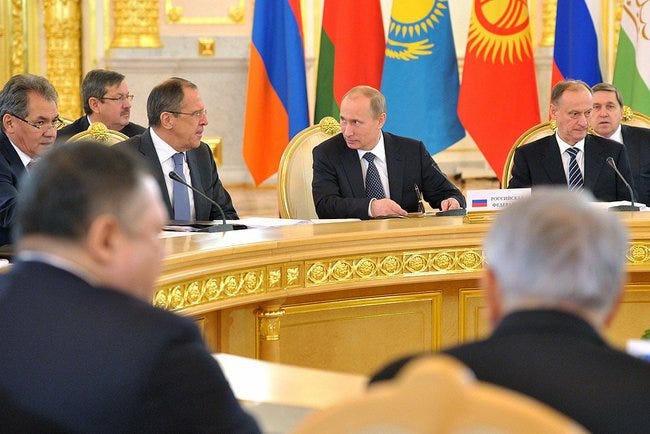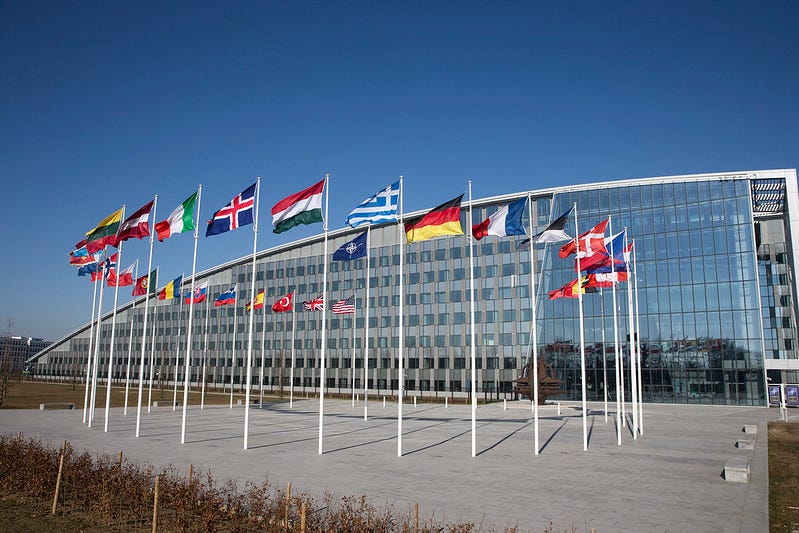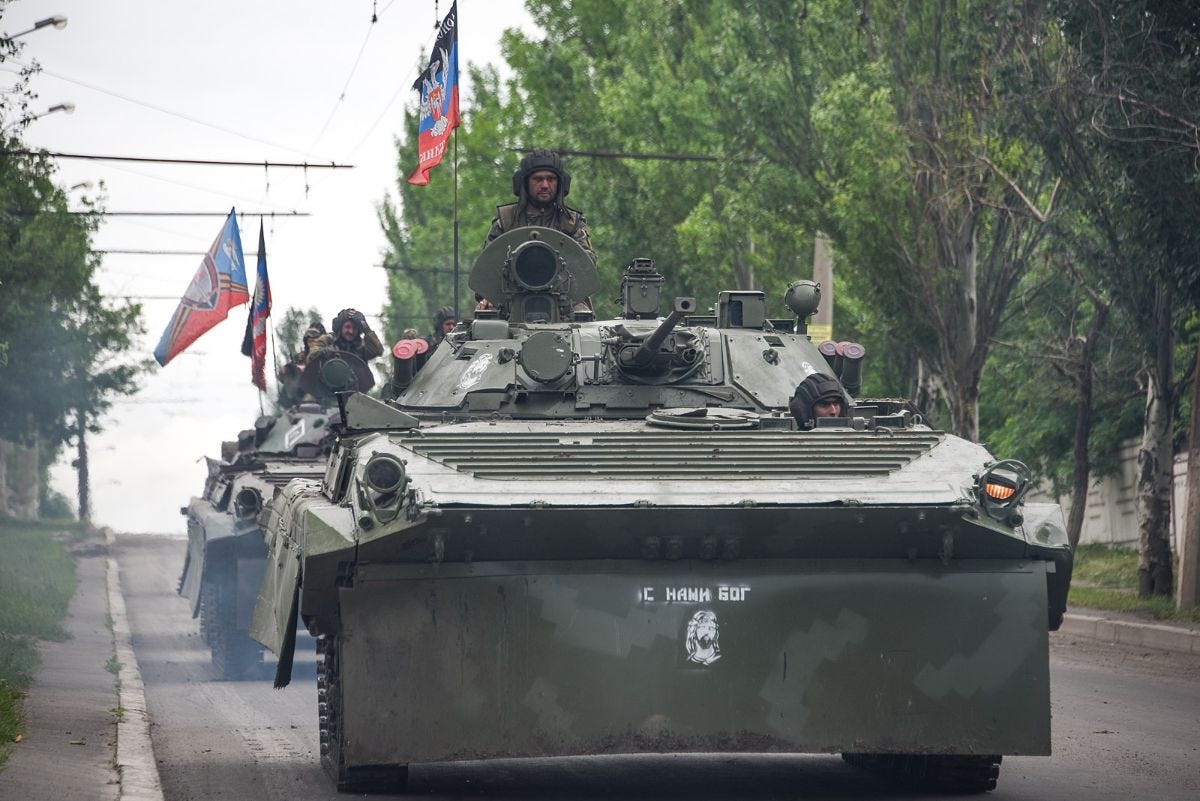by Gabe Fleisher
Good morning! It’s Wednesday, January 26, 2022. Election Day 2022 is 286 days away. Election Day 2024 is 1,014 days away.
You’ve probably heard a lot in the news lately about Russia and Ukraine. But what exactly has been happening, and how bad could it get? In our top story this morning, WUTP global affairs contributor Miles Hession, breaks down the latest and takes a look at some possible endgames.
How will the Ukraine standoff end?
By Miles Hession
As troops continue to amass around Ukraine’s borders from Russian and NATO forces, and resources and supplies are moved into the region to prepare for conflict, uncertainty looms in the air in Eastern Europe.
Russia’s unprecedented troop buildup has been met with diplomacy and harsh threats from the U.S. and NATO countries, but the direction of the crisis is unclear. With a spread of possibilities, interrogating each path this conflict could take can illuminate the motivations of the power players involved and reveal what’s at stake.
This is not an exhaustive list, and the situation is likely to evolve, but here are some possible paths forward in Ukraine at this point:
Path #1: Both sides make diplomatic concessions, no invasion
When Russia first began amassing troops on Ukraine’s border, diplomacy was the main route that Western powers like the U.S. and NATO pursued with the Russian government. Through a series of unsuccessful meetings last week, demands from the two blocs crystallized and the difficulty in finding a diplomatic solution emerged.
Russia refused to accept anything less than assurances NATO would cease expansion into Eastern Europe as it sought to establish its sphere of influence in the region, while the West refused any changes to NATO’s membership policy or promises that Ukraine would not become a NATO member in the future.
How likely is it? After numerous meetings have failed to bridge the divide, a clear-cut diplomatic resolution followed by de-escalation seems unlikely, but not impossible. Considerable concessions would be required from either the West or Russia that would be a fundamental change in foreign policy for both.
Russia has sunk a lot of resources and time into reestablishing a sphere of influence over Eastern Europe similar to the U.S.S.R., and allowing NATO expansion into the region would hinder the ambitions of its own rival military alliance, the Collective Security Treaty Organization (CSTO). By conceding, the U.S. and Western allies would similarly be undermining the efficacy of NATO and cede a lot of power to Russia in the region.
Path #2: Russia invades, the West responds with sanctions
The U.S. has accused Russia of planting saboteurs in Ukraine as a pretext for invasion, while the U.K. has alleged that Russia is plotting to install pro-Kremlin leaders in Kyiv. If these intelligence reports proves accurate, a swift invasion by Russia followed by the installation of new leaders could plant Ukraine firmly in Russia’s sphere of influence.
Western allies have made clear they have many tools in their arsenal that would exert serious pressure on Russia should an invasion take place, with sanctions being the preferred instrument. President Biden announced a tranche of severe sanctions that would seek to “maximize pain” on the Russian economy, and even said he would consider personal sanctions against Russian President Vladimir Putin himself should an invasion occur.
How likely is it? While the U.S. has promised severe economic punishment against Russia in the event of an invasion, its allies seem more unwilling. Germany, for example, has been hesitant due to its reliance on Russian natural gas and the planned Nord Stream 2 pipeline that will connect the two countries. Russia supplies ⅓ of the E.U.’s gas, so a mid-winter cut-off in response to sanctions would be devastating, and without the pipeline, countries like Germany would have a lot of energy uncertainty.
The U.S. has sought out an alternative supply of natural gas and crude oil to Europe to respond to this possibility, loosening Putin’s grip on Europe’s energy supply. If the Biden administration is able to work out a deal quickly, European allies might be more willing to throw support behind severe sanctions — but the deal remains in flux, meaning NATO remains divided over its response and limited in its capability to stave off a Russian invasion.
A historical analogue: Following Russia’s invasion of the Crimean peninsula in 2014, a wide swath of punishing sanctions were introduced by the E.U. and the U.S., but the efficacy of these were limited as the E.U. was initially unwilling to target Putin’s inner circle.
Path #3: Russia invades, the West joins in a proxy conflict
As diplomatic avenues continue to fail, the Biden administration has signaled a growing willingness to support a Ukrainian insurgency should Russia encroach on Ukrainian sovereignty. Stopping short of moving American troops into Ukraine, military officials made clear they have the capabilities and resources to fund and train a Ukrainian insurgency as well as provide military support through intelligence-sharing, cyber-attacks, and arming of fighters.
How likely is it? While the Biden administration hasn’t ruled this out, and NATO has begun to shift resources and send reinforcements into Ukraine, Biden would likely be unwilling to start a proxy conflict with Russia. With the painful, and recent, memory of the troop withdrawal from Afghanistan last year, entering into another proxy conflict against a much larger military than the Taliban could create another long-lasting war that Biden likely wouldn’t want associated with his legacy.
If a proxy conflict were to begin, the U.S.’s involvement would probably be far more scaled back than in the Afghanistan and Iraq wars, providing resources and intelligence but stopping short of deploying U.S. troops for training and fighting purposes.
A historical analogue: The U.S. threw its support behind the mujahideen during a proxy war with Russia after their invasion of Afghanistan in 1979 and was successful in pushing Russia out of the country. But that decision had long-lasting consequences: the U.S. backing the mujahideen was a major factor in the rise of the Taliban to power.
Path #4: Russia invades, war breaks out with the U.S.
Earlier this week, Defense Secretary Lloyd Austin placed 8,500 U.S. troops on high alert and began exploring military options for a direct response by the U.S. to a Russian invasion. Russia also began to amass troops in Belarus and initiated a series of military drills not only on the border with Ukraine but across the entire country. With both countries posturing that outright war would be possible, formulations about what a war would be like between two nuclear powers have emerged.
How likely is it? With Putin’s rhetoric and diplomatic strategy in recent weeks becoming reminiscent of the Cold War, an important concept from that era has returned to the forefront: mutual assured destruction.
Any deployment of nuclear weapons would be countered by the other side, leading to not only the destruction of both countries but likely the world. This reality will likely stave off any outright war between the two, as any direct conflict could lead to nuclear deployment.
A historical analogue: President Biden explicitly compared a Russian invasion to World War II on Tuesday. But if nuclear weapons were deployed, the destruction that took place during the Second World War would pale in comparison to what would emerge from conflict between Russia and the U.S.

Path #5: This is all sound and fury
All the threats, rhetoric, and troop movements notwithstanding, it’s also possible that this standoff has more been a pretext for global leaders on both sides to advance their goals:
British Prime Minister Boris Johnson has been looking for opportunities to insert the U.K. back into global politics following Brexit, and providing strong assistance to NATO during this crisis does exactly that.
Germany’s unwillingness to back sanctions against Russia due to concerns about natural gas supplies has led the U.S. to seek alternative fossil fuel supplies for the E.U., which could benefit that bloc as the U.S. is likely a safer trade partner than increasingly aggressive Russia.
To the Biden administration, the crisis is a distraction from growing domestic issues like soaring inflation and a lackluster coronavirus response, and instituting new sanctions on Russia could be seen as a much needed foreign policy win after the troop withdrawal in Afghanistan.
Russia has been able to flex its military might, and used up a lot of diplomatic capital that the U.S. likely would rather use with China with the current crisis. Indeed Chinese General Secretary Xi Jinping has remained personally in the loop by Putin.
Of course, if the standoff does indeed end up “signifying nothing” — and ends without escalation, but also without any major diplomatic concessions — the country that will have bore the brunt of all this posturing is Ukraine, which has been used as political football since the 2014 invasion of Crimea and has seen its vulnerabilities exposed by the latest crisis.
A historical analogue: A military buildup that occurred on the Ukrainian border in the spring of last year resulted in a Russian de-escalation. Russia claimed it was only conducting military exercises, while NATO continued to drag its feet on granting Ukraine membership into the treaty organization. In other words: the status quo reigned, as could very well happen here.

The FDA revoked its authorization for two antibody therapies for Covid-19, saying the treatments have proven ineffective against Omicron. The decision sparked pushback from Republicans, such as Florida Gov. Ron DeSantis, who has aggressively promoted use of the antibody drugs.
DeSantis is considering suing the federal government in order to make the treatments available again.
White House press secretary Jen Psaki called his stance “crazy,” citing support for the FDA’s decision from the American Medial Association and the maker of one of the treatments.
Related: Pfizer launched a new clinical trial to test a Covid-19 vaccine specifically designed to target the Omicron variant. Also, the U.S. set a new record for its deadliest day of the pandemic on Monday, as 2,191 infected Americans perished.
House Speaker Nancy Pelosi is running for re-election. Pelosi announced her bid for an 18th term on Tuesday after months of speculation that she was preparing to retire.
After reclaiming the speaker’s gavel in 2018, Pelosi promised Democrats that she would step down from the post at the end of this year.
Pelosi could still win re-election in November and then resign shortly thereafter, as other speakers have done in the past.
Related: Tennessee Rep. Jim Cooper announced plans to retire, becoming the 29th House Democrat to step down ahead of the midterms. Cooper’s seat was threatened by a Republican redistricting plan.
The House January 6 committee continues to rack up witness interviews. Radio host Alex Jones, a prominent conspiracy theorist, revealed on Tuesday that he had been deposed by the panel and exercised his Fifth Amendment right against self-incrimination “almost 100 times” during the proceedings.
Court filings this week also indicated that John Eastman, who penned a controversial memo for the Trump White House sketching out how the former president could cling to power after losing re-election, had testified. Eastman apparently invoked his Fifth Amendment rights 146 times.
Related: Federal prosecutors are investigating GOP efforts to submit fake Electoral College certificates after the 2020 election.
— If the Supreme Court rolls back Roe v. Wade, the United States will join a small club. Per the New York Times, only three other countries (Poland, El Salvador, and Nicaragua) have tightened their abortion laws since 1994. In the same timespan, 59 countries have expanded abortion rights. The current U.S. abortion laws are more lenient than most other countries.
— The U.S. immigration system still operates almost entirely on paper. That has created a huge backlog for immigrants applying for citizenship. Per the Wall Street Journal, many applicants are waiting for the government to find their immigration records — but the documents are stuck in “miles-long networks of man-made limestone caves built beneath the Kansas City metro area” that the government uses as storage facilities. The facilities have been mostly closed due to the pandemic, with no plans to reopen.
— Scientists have discovered a rare brain mutation unique to the United States. Per the Atlantic, the mutation has been traced back 250 years to a single North Carolina couple born in the 1760s. Because it does not manifest itself until patients have already had children (thereby evading evolution), the mutation still haunts their many descendants across the country today. “The gene’s history is the families’ history is America’s history,” the Atlantic’s Sarah Zhang wrote.
— Last Friday’s newsletter misstated a statistic relating to inflation. The consumer price index, which is used to measure inflation, rose 7% in 2021, the largest 12-month gain since 1982.
All times Eastern.
President Joe Biden will receive his daily intelligence briefing at 10:15 a.m. Then, at 1 p.m., he will meet with a group of CEOs to discuss his Build Back Better proposal. Attendees will include the heads of General Motors, Ford, and Microsoft.
At 3:30 p.m., Biden will sign an executive order to “make sexual harassment an offense in the Uniform Code of Military Justice, and to strengthen the military’s response to domestic violence and the wrongful broadcast or distribution of intimate visual images.”
White House press secretary Jen Psaki will hold her daily press briefing at 2 p.m.
U.S. public health officials will hold a press briefing at 2 p.m. to provide an update on the Covid-19 response. The briefers will include Dr. Anthony Fauci, the White House chief medical adviser; Dr. Rochelle Walensky, the CDC director; and Jeff Zients, the White House COVID-19 response coordinator. The House and Senate are both on recess for the week.
The Supreme Court does not have any oral arguments or conferences scheduled this week.
That’s it for today. If you enjoy Wake Up To Politics, it’s always appreciated if you donate to support the newsletter or buy some merch. Or if you tell your friends and family to sign up at wakeuptopolitics.com.
If you have any questions or feedback, feel free to email me: my inbox is always open.
Thanks for waking up to politics! Have a great day.
— Gabe









